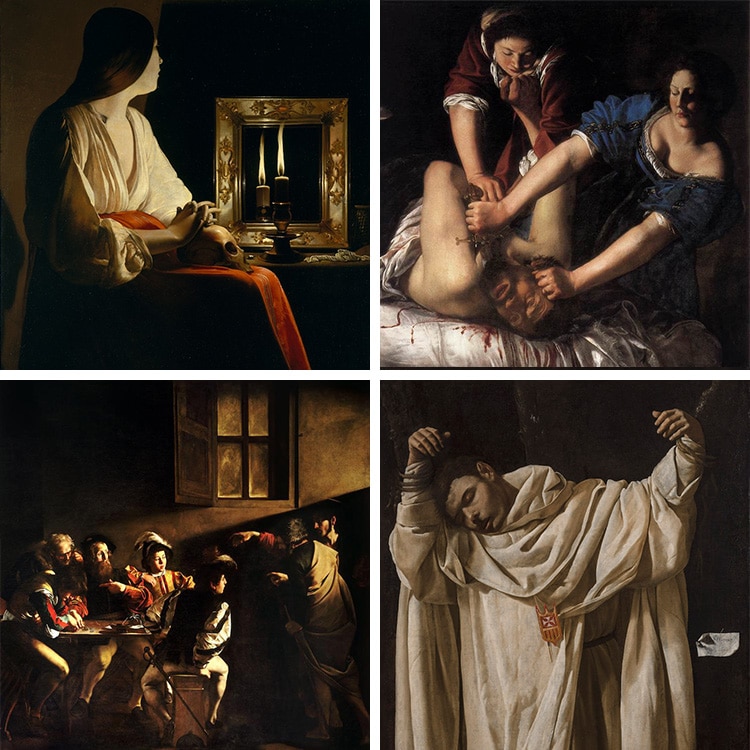
This post may contain affiliate links. If you make a purchase, My Modern Met may earn an affiliate commission. Please read our disclosure for more info.
After the Renaissance and Mannerist styles began to wane, the 17th century ushered in a new art movement steeped in drama and grandeur. Named after barroco—a Portuguese term for an irregularly shaped pearl—the Baroque period is defined by its lavishness and desire to inspire awe in its audiences.
Baroque painters like Caravaggio and Rembrandt produced striking compositions by emphasizing the contrast between light and dark. Other artists from this movement created theatrical effects by relying on motion and stories from the Bible as well as ancient mythology. We've put together a list of iconic masterpieces that collectively illustrate the drama of this period and the different approaches painters took to achieve it.
Scroll down to see a list of 15 famous Baroque paintings.
Take a tour through these 15 famous Baroque paintings that define the drama of this lavish art movement.
Caravaggio, The Calling of Saint Matthew, 1599–1600
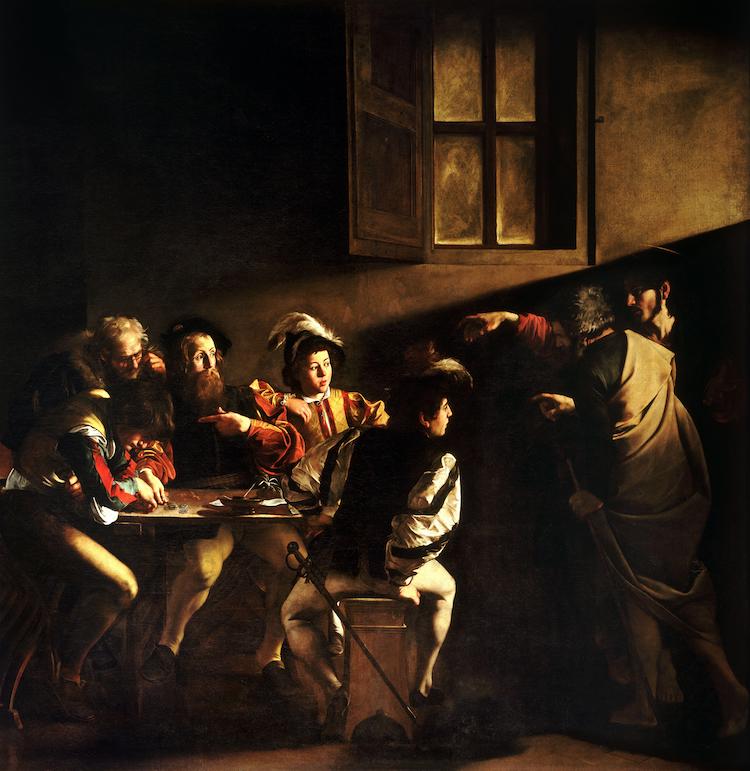
Caravaggio, “The Calling of Saint Matthew,” 1599–1600 (Photo: Wikimedia Commons, Public domain)
The Calling of St. Matthew, which can still be found in Contarelli Chapel in Rome, remains one of Caravaggio‘s most famous paintings. The informal, natural gathering of figures was a huge shift against the idealism of Mannerism. Dressed in contemporary clothing, the characters appear lifted from a genre scene rather than a traditional religious painting.
But the real genius of the painting comes from Caravaggio's use of light and shadow—the trademark of his style. Following the actual architecture of the chapel and its windows, sunlight streams in and follows the hand of Christ, who points toward Matthew. The light not only creates heightened drama but acts as a metaphor for the hand of God, asking Matthew to join him.
Get the Print:
Annibale Carracci, Domine, quo vadis?, 1602
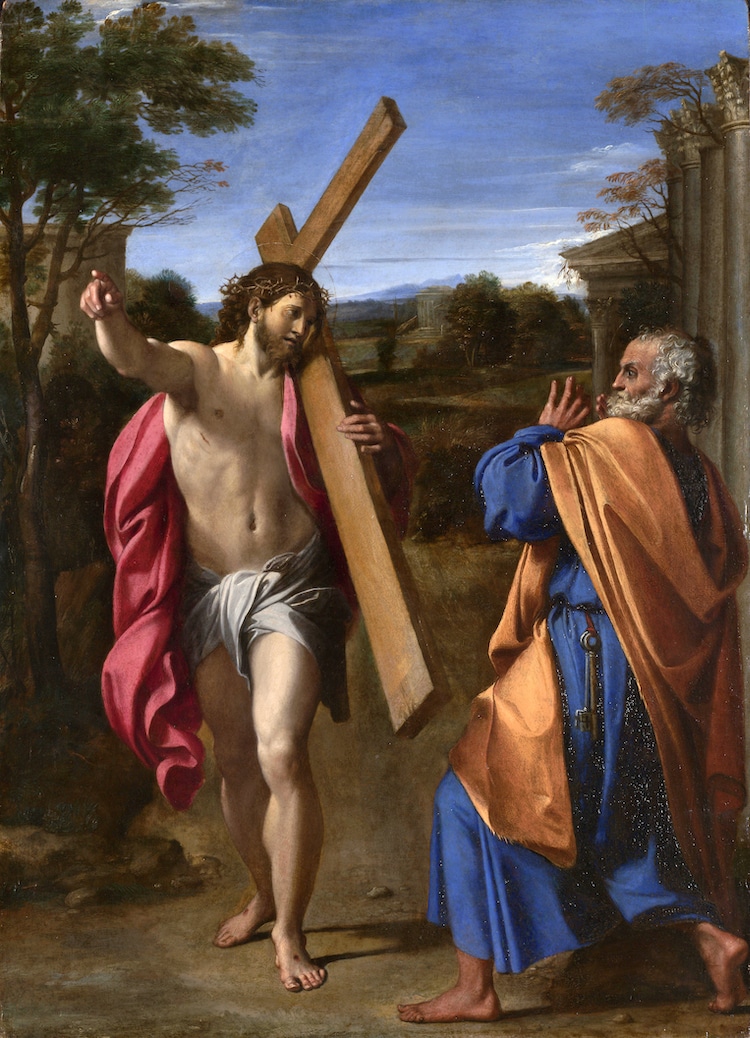
Annibale Carracci, “Domine, quo vadis?,” 1602 (Photo: National Gallery via Wikimedia Commons, Public domain)
Although his art became overshadowed by Caravaggio's overtime, Annibale Carracci was regarded as one of the leading Baroque painters in the 17th-century. His style resembled some of the idealism of the Renaissance and Mannerist styles, but he created Baroque-like drama through monumental figures and dynamic compositions. Domine, quo vadis? exemplifies Carracci's approach with two brightly colored figures narrating the story through bold gestures.
Get the Print:
Annibale Carracci, The Lamentation of Christ, c. 1604
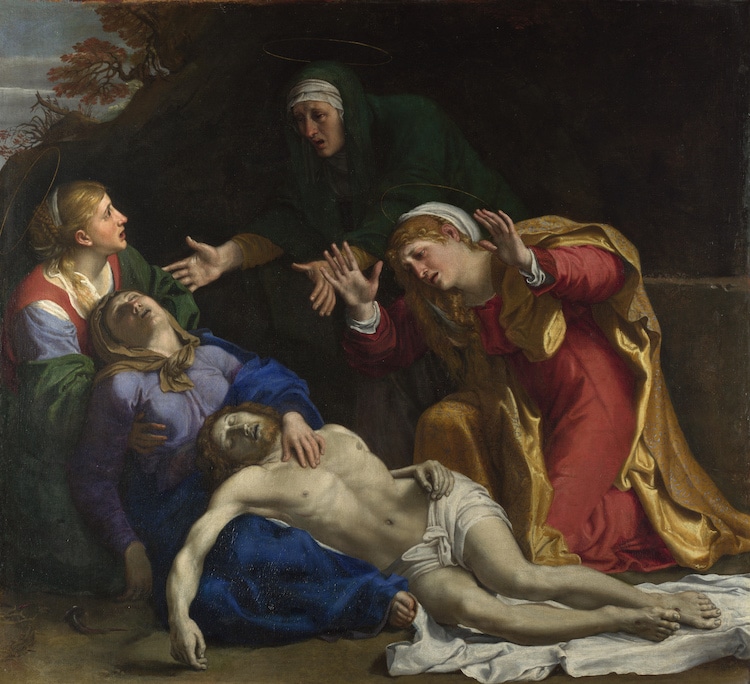
Annibale Carracci, “The Lamentation of Christ,” c. 1604 (Photo: National Gallery via Wikimedia Commons, Public domain)
The Lamentation of Christ is another example of Carracci's masterful painting compositions. Here, he depicts the lamentation of the dead body of Christ by the Virgin Mary, Mary Magdalene, and two other women who may be Mary Cleophas and Mary Salome. Three of the figures are layered on top of one another, while the other two that are crouched on the right side have their hands out in emotional gestures, communicating the horror of what is going on.
Get the Print:
Caravaggio, David with the Head of Goliath, 1609–1610
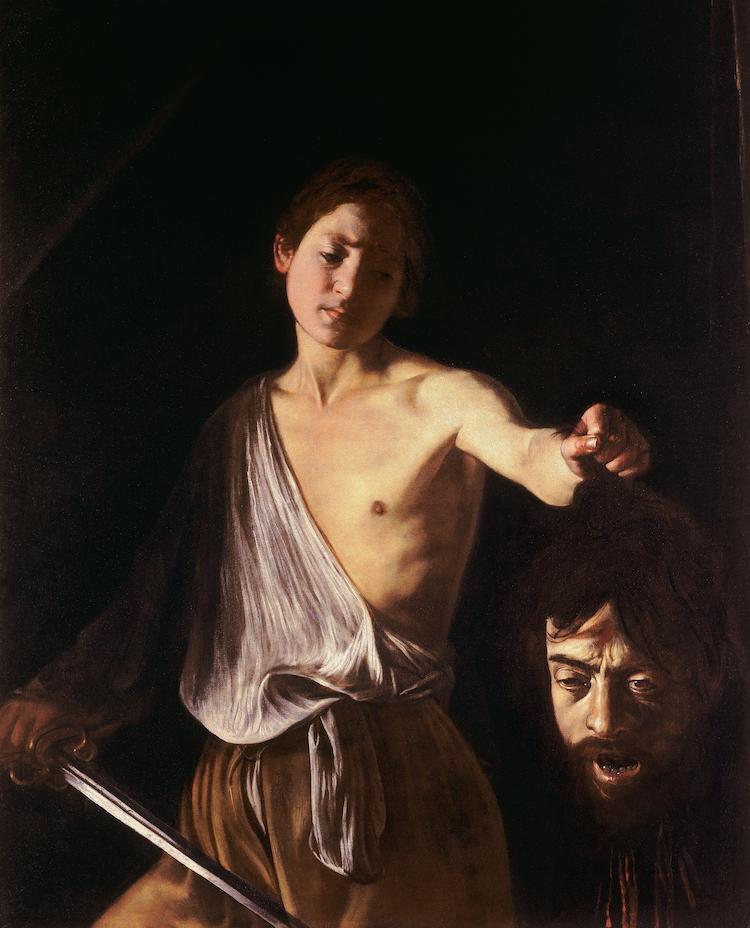
Caravaggio, “David with the Head of Goliath,” 1609–1610 (Photo: Galleria Borghese via Wikimedia Commons, Public domain)
David with the Head of Goliath is a psychological masterpiece painted during a period when Caravaggio was exiled from Rome after murdering a man during a tennis match. Caravaggio uses his characteristic tenebrism to craft an oil painting showing a young David looking pensively at the severed head of Goliath.
Get the Print:
Artemesia Gentileschi, Judith Slaying Holofernes, c. 1612–1613

Artemesia Gentileschi, “Judith Slaying Holofernes,” c. 1612–1613 (Photo: National Museum of Capodimonte via Wikimedia Commons, Public domain)
In an art world dominated by men, Artemisia Gentileschi carved a place for herself as a dominant female painter. Paintings characterize her oeuvre with an emphasis on female subjects, the most famous of which is her masterpiece, Judith Slaying Holofernes. This large tenebrous canvas portrays an Old Testament story in which a widow and her maid overpower—and eventually behead—a lustful, threatening man. Artemisia composes the work so that the violence is at the forefront of the scene to make the biggest impact.
Get the Print:
Peter Paul Rubens, Rape of the Daughters of Leucippus, 1618
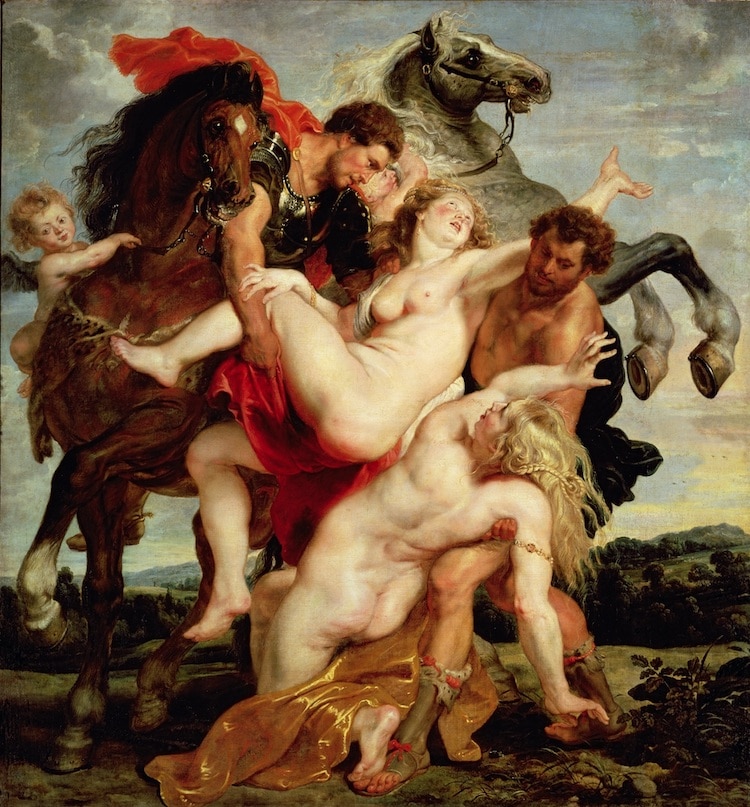
Peter Paul Rubens, “Rape of the Daughters of Leucippus,” 1618 (Photo: Alte Pinakothek via Wikimedia Commons, Public domain)
Peter Paul Rubens was a key figure in the Baroque Period. Unlike Caravaggio and Artemisia, he did not rely on light and shadow to create drama but instead employed a vibrant color palette and dynamic movement. Rape of the Daughters of Leucippus typifies his iconic style with voluptuous figures twisting their bodies, evoking a sense of chaos and violence in the composition.
Get the Print:
Francisco de Zurbarán, The Martyrdom of Saint Serapion, 1628
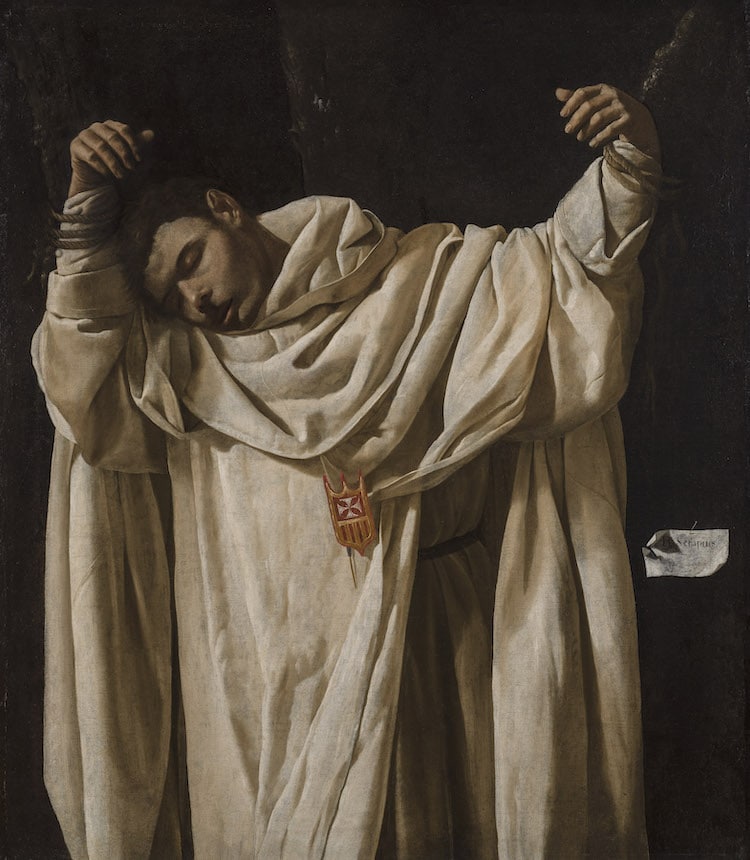
Francisco de Zurbarán, “The Martyrdom of Saint Serapion,” 1628 (Photo: Wadsworth Atheneum Museum of Art via Wikimedia Commons, Public domain)
Francisco de Zurbarán was a leading Baroque painter known as the “Spanish Caravaggio.” The Martyrdom of Saint Serapion is emblematic of his style, featuring a male figure dressed in white set against a black background. The strong use of chiaroscuro and simple yet powerful composition is similar to Caravaggio's work, which was likely a major influence on Zurbarán.
Get the Print:
Peter Paul Rubens, Judgment of Paris, c. 1636
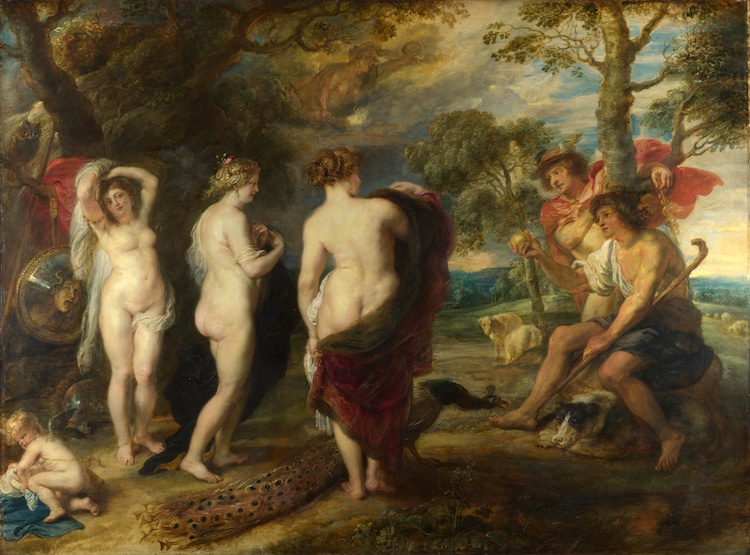
Peter Paul Rubens, “Judgment of Paris,” c. 1636 (Photo: National Gallery via Wikimedia Commons, Public domain)
Ruben's Judgment of Paris depicts the mythological story where Paris must choose who is the most beautiful among the goddesses, Hera, Athena, and Aphrodite. This subject was popular among artists as a way to explore the feminine ideal. In this case, Rubens portrays the unfolding narrative with his sensual style, leading the viewer's eyes across the canvas with the line of posing figures.
Get the Print:
Georges de la Tour, The Penitent Magdalene, c. 1640
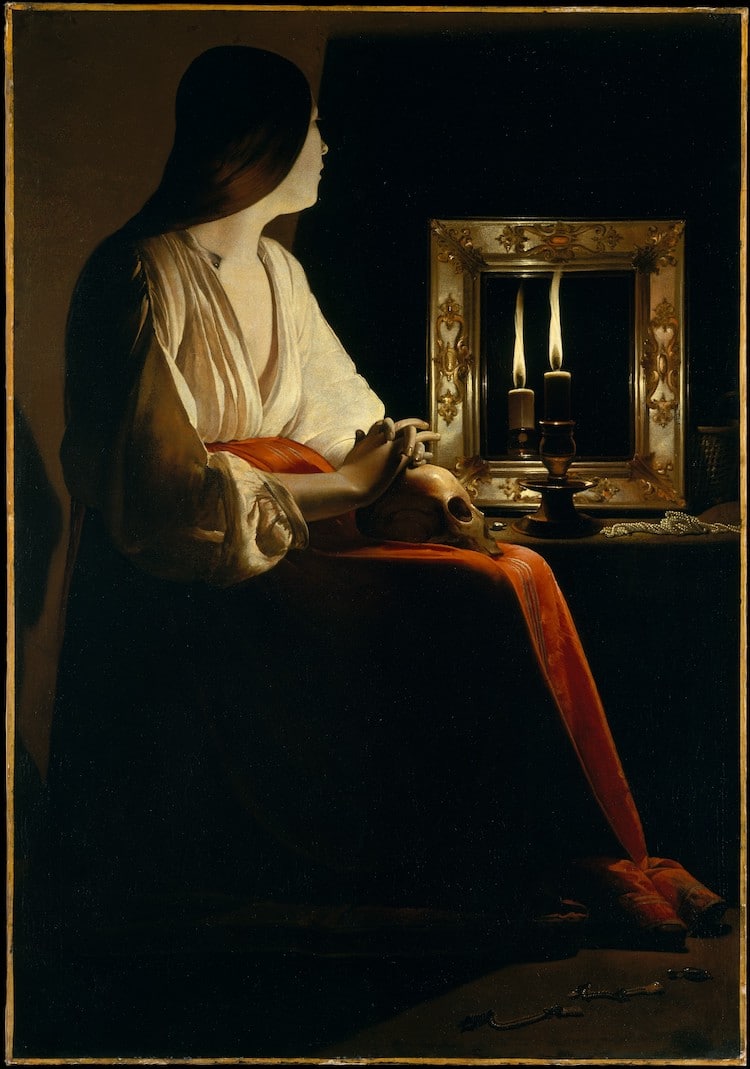
Georges de la Tour, “The Penitent Magdalene,” c. 1640 (Photo: The Met via Wikimedia Commons, Public domain)
French painter Georges de La Tour is best remembered for his poignant works lit by candlelight. The Penitent Magdalene represents the artist's style with a simplified rendition of the religious figure Magdalene clasping her hands over a skull—which is functioning as a memento mori—and looking in the direction of the shadowed wall. The diminutive sources of light help De La Tour curate a powerful composition where the viewer's attention immediately goes to the patch of white in Magdalene's tunic.
Get the Print:
Rembrandt, The Night Watch, 1642
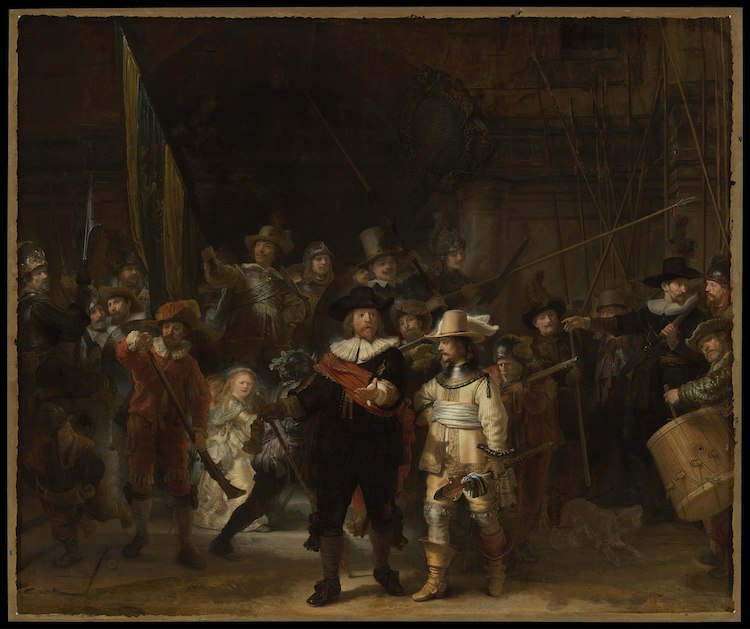
Rembrandt, “The Night Watch,” 1642 (Photo: Rijksmuseum via Wikimedia Commons, Public domain)
Rembrandt van Rijn was one of the most prolific artists of the Dutch Golden Age. Among his impressive oeuvre, there is one piece that stands out from the rest: a fascinating group portrait painting called The Night Watch. Completed in 1652, this massive work is one of the hallmarks of the Dutch Golden Age. Not only does it display Rembrandt's masterful skills at rendering dozens of individuals almost lifesize, but it also features Baroque art qualities like a dramatic use of light and shadow and a display of movement.
Get the Print:
Nicolas Poussin, The Abduction of the Sabine Women, 1643
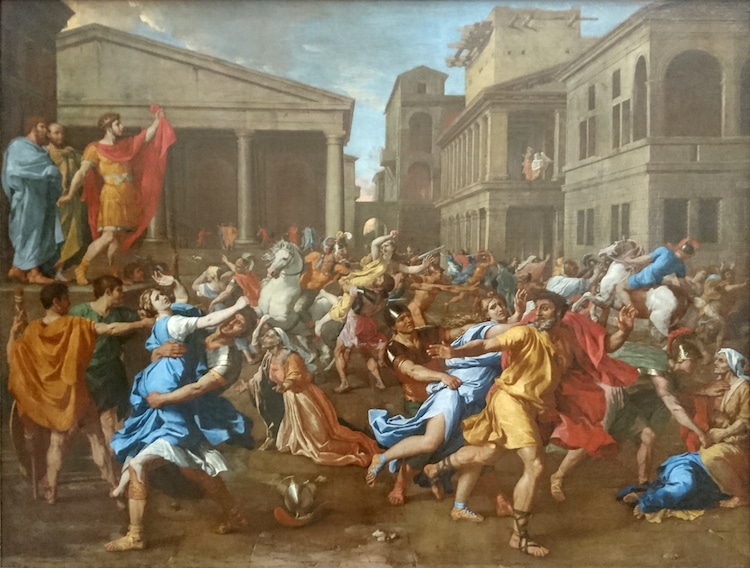
Nicolas Poussin, “The Abduction of the Sabine Women,” 1643 (Photo: Louvre via Wikimedia Commons, Public domain)
French artist Nicolas Poussin cultivated a Baroque style based on bright colors, clarity, and line. He conveyed drama in his paintings by organizing numerous figures in active poses, as seen in his piece, The Abduction of the Sabine Women. Here, the chaotic scene is created by the dozens of running, jumping, and twisting figures obstructing the large open space.
Get the Print:
Charles Lorrain, The Embarkation of the Queen of Sheba, 1648
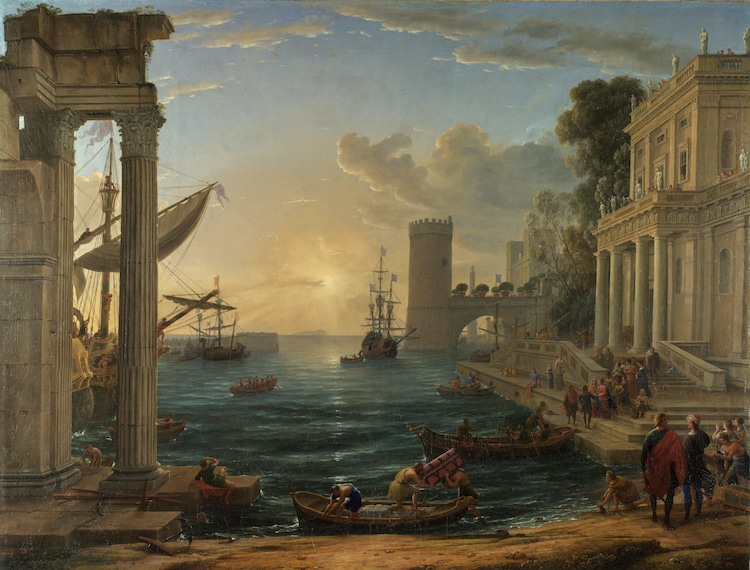
Charles Lorrain, “The Embarkation of the Queen of Sheba,” 1648 (Photo: National Gallery via Wikimedia Commons, Public domain)
Based in Italy for most of his life, French artist Charles Lorrain was a leading landscape painter during the Baroque period. The Embarkation of the Queen of Sheba portrays a biblical scene in which the Queen of Sheba leaves to visit King Solomon. Unlike some of the artists of this movement, Lorrain does not rely on chiaroscuro or movement. Instead, he creates a sense of splendor in the scope of the harbor scene, with classical buildings lining the blue water as the Sun lowers in the distance.
Get the Print:
Diego Velázquez, Portrait of Innocent X, 1650
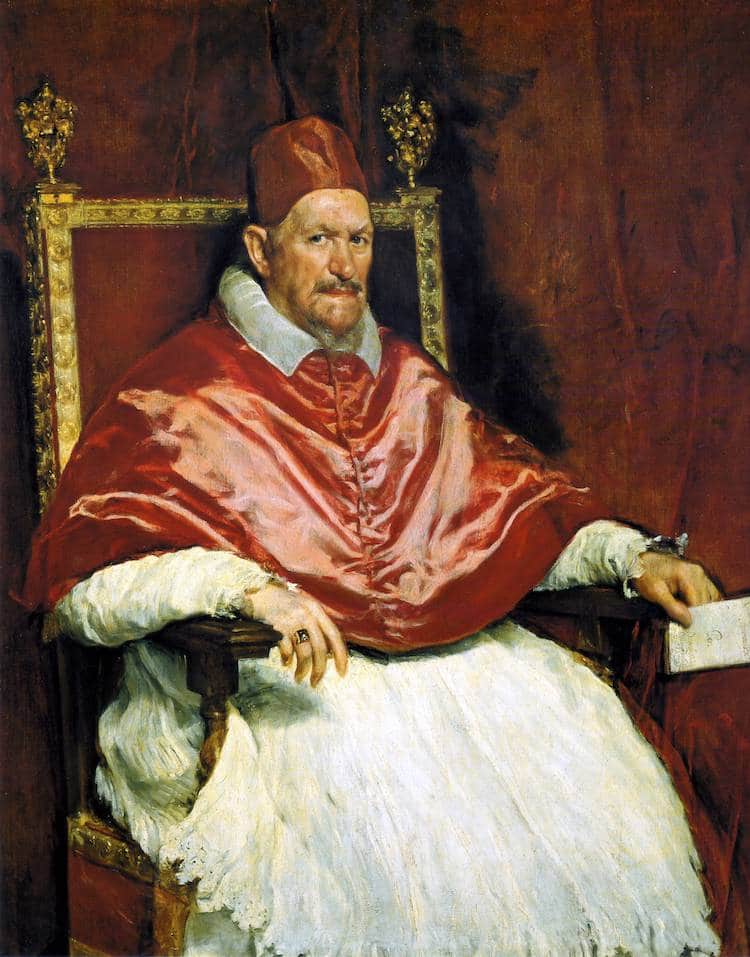
Diego Velázquez, “Portrait of Innocent X,” 1650 (Photo: Doria Pamphilj Gallery via Wikimedia Commons, Public domain)
Baroque painter Diego Velázquez was a fixture of the Spanish royal court and renowned for his honest and exquisite portraits. During one of his trips to Italy, he was commissioned to paint Portrait of Innocent X. Velázquez prepared for the occasion by painting a portrait of his assistant Juan de Pareja—a Spaniard born into slavery. This piece displays the Impressionist-style brushstrokes that Velázquez would employ in the portrait of the Pope, as well as a limited color palette. A couple of years later, Velázquez freed Pareja and he became an independent artist.
Velázquez was known for capturing the reality of his subjects without much flattery. In fact, when the pope saw the finished picture, he was recorded as exclaiming: “It's too true! It's too true!” Nevertheless, he accepted it, and the portrait is considered by many historians as one of the greatest portraits ever made.
Get the Print:
Diego Velázquez, Las Meninas, 1656
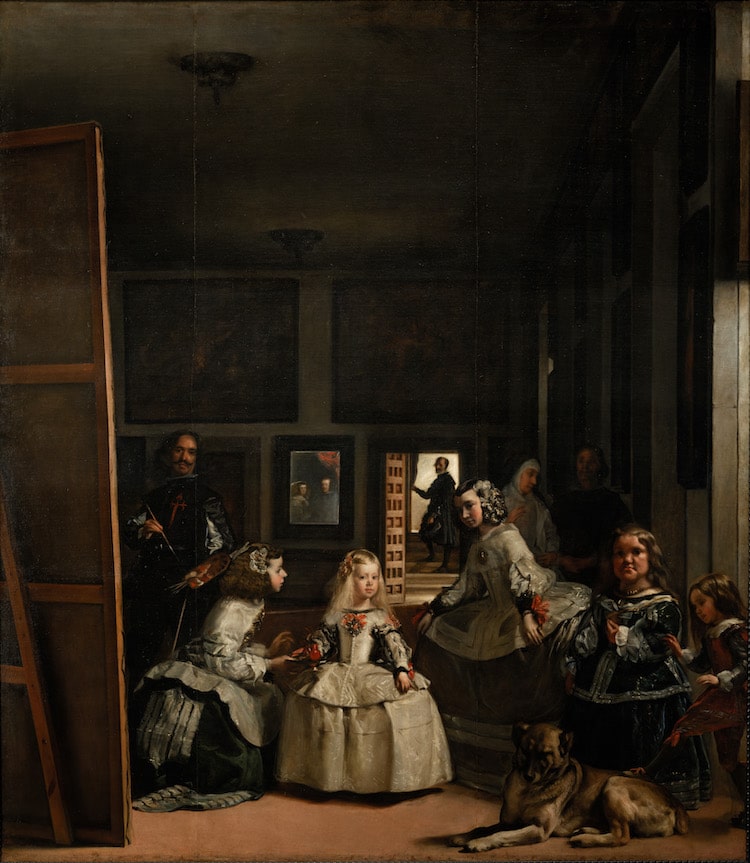
Diego Velázquez, “Las Meninas,” 1656 (Photo: Museo del Prado via Wikimedia Commons, Public domain)
Entitled Las Meninas, this massive and very layered painting depicts the young, 5-year-old princess in an opulent white dress, attended by her ladies-in-waiting. On the right are two people with dwarfism and a sleeping Spanish mastiff. On the left is Velázquez himself, looking at the viewer as he paints his portrait. Additionally, the background features other characters, including the Margaret Theresa's chaperone Marcela de Ulloa discussing with a shadowed bodyguard and the queen's chamberlain José Nieto standing in the doorway. The mirror hanging on the back wall features another hidden portrait of King Philip IV and the queen.
Get the Print:
Elisabetta Sirani, Portia Wounding Her Thigh, 1664
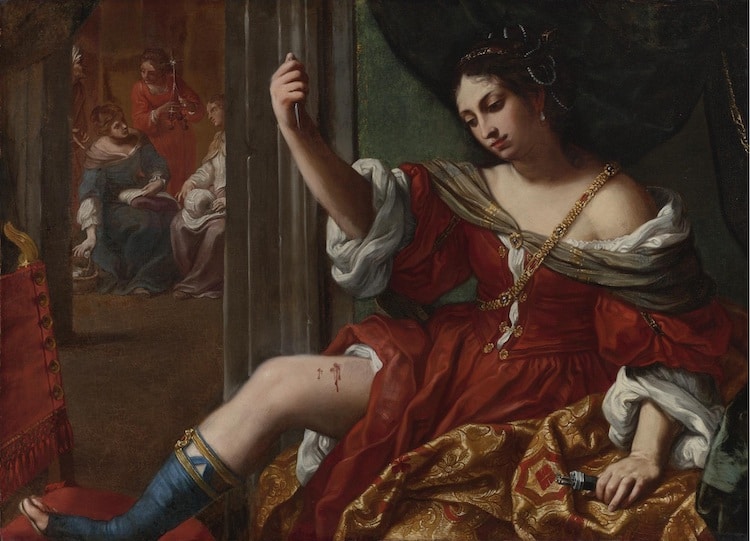
Elisabetta Sirani, “Portia Wounding Her Thigh,” 1664 (Photo: Wikimedia Commons, Public domain)
Elisabetta Sirani was another key female artist of the 17th century who, despite only living to age 27, left behind a prolific portfolio of paintings, etchings, and drawings. Similar to Artemisia, Sirani had an interest in depicting female subjects. Her painting, Portia Wounding Her Thigh illustrates a classical story in which Portia deliberately harms herself to demonstrate to her husband, Brutus, that she is his equal.
Related Articles:
20 Revolutionary Art Movements That Have Shaped Our Visual History
What Is Fresco Art? Exploring the Ancient Technique of Painting on Plaster
The Captivating History and Enduring Influence of Italian Renaissance Art
How Gustave Courbet Shocked the Art World With His Realistic Depictions of Everyday People






















































































